| HOSTED BY |
A History of Art Forgery
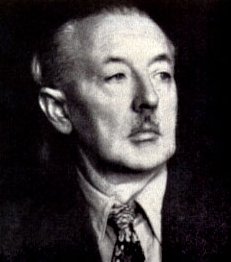 HAN VAN MEEGEREN |
This Dutch painter (1889-1947), is probably the best-known forger of the 20th century. At the end of World War II, an Allied art commission discovered a previously unknown work of Jan Vermeer in the collection of Nazi leader Hermann Goering. The sale of the painting was traced to van Meegeren, who was charged in May 1945 with selling a Dutch national treasure and collaborating with the enemy. Van Meegeren subsequently confessed to having forged the painting, a less serious offense; and to prove it he painted another “Vermeer” in his prison cell. In all, van Meegeren is known to have produced 14 forgeries of works by Vermeer and Pieter De Hooch, several of which had been proclaimed masterpieces by scholars before it was learned that they all were fakes. |
 |
Han van Meegeren. The Disciples in Emmaus: Boymans Museum, Rotterdam. It was this work which started the scandal of the Vermeer forgeries. Arnau, Frank. The Art of The Faker – 3,000 years of Deception. Boston, Little Brown & Company, 1959. LCC 61-5317. |
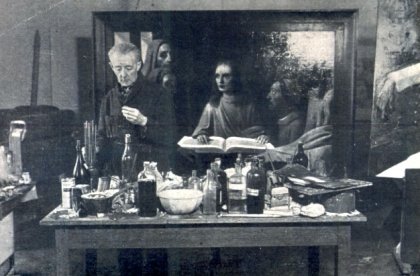 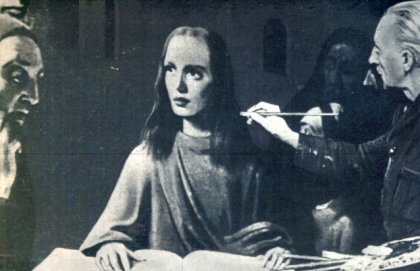 |
| Two
views of Han Van Meegeren at work on “The Young Christ”,
after Vermeer. This is the painting that Van Meegeren created
in the style of Vermeer in three months in 1945 to prove to authorities
that he was the forger who created the fake Vermeer Christ
at Emmaus, which was discovered after the end of the War to
have been in the collection of the Nazi Herman Goering, and which
was believed to be an original Vermeer. Had Van Meegeren been
convicted of selling the painting to Goering, he could have faced
the death penalty for treason. Admitting the forgery, and proving
it by executing this painting, was the lesser of the two evils.
Photographs from The Master Forger by John Godley; New York: Wilfred Funk, Inc. 1950. |
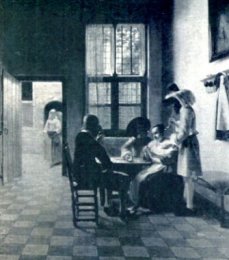 |
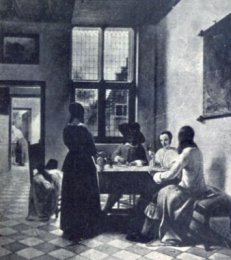 |
ABOVE LEFT: Pieter de Hoogh (c. 1632-1683) The Card Players. This Painting was the inspiration for a forgery by Han Van Meegeren in the 1930's. ABOVE RIGHT: Pastiche by Han Van Meegeren purporting to be Interior with Drinkers by Pieter de Hoogh. Schuller, Sepp. Forgers, Dealers, Experts – Strange Chapters in the History of Art. New York: G.P. Putnam’s Sons 1960. LCC 60-13452; Savage, George. Forgeries, Fakes and Reproductions. London, Barrie & Rockliff, 1963. |
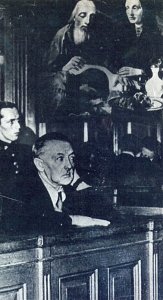 |
Han van Meegeren listens to the evidence at his trial in Amsterdam.
In the background is The Blessing of Jacob, sold in 1942
as the work of Vermeer. |
| Intro (1) (2) (3) (4) (5) (6) (7) (8) (9) (10) (11) (12) (13) (14) (15) (16) (17) (18) (19) (20) Look for updates to this exhibit every week. Also visit the companion to this exhibit: FABULOUS FAKES |
| Special thanks to people without whom this exhibition would not have been possible: Thea Eichler, NRCA; Billie Tucker, New Rochelle Library; Ivar Hyden, Backstreet Gallery and all the contributing artists. |
| Additional information about the availability of Fabulous Fakes, the History of Art Forgery or any of the works in the exhibition may be obtained by contacting The New Rochelle Council on The Arts by email or by calling 212-529-2025. More information on the NRCA can be found by connecting to the internet and clicking here. |
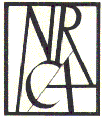 Fabulous Fakes and A History of Art Forgery © J. L. Dolice, 2001, 2003.
|
| All images in this presentation may not be copied, stored in any electronic retrieval device or used in any way without permission in writing. ISBN 0-935901-51-5. |
| Art Forgery | Art Haus |